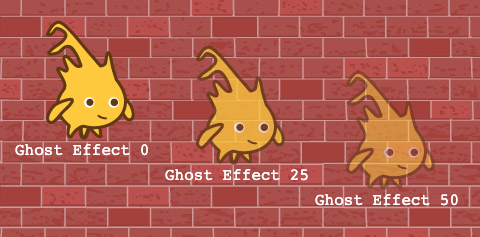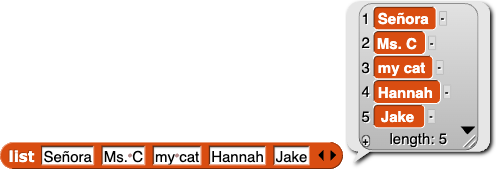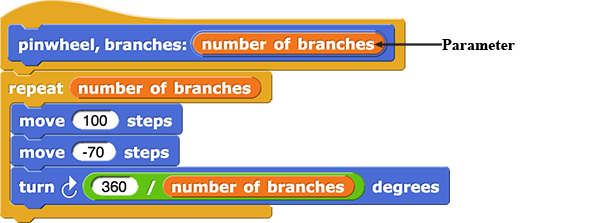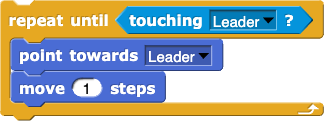The transparency of an image is how much you can see what's behind it. For example, here is the Alonzo sprite shown with three different transparencies (which have been set using the ghost effect block).

The Alonzo character is named after Alonzo Church, a major contributor to early computer science. In this project, there are three objects related to Alonzo:
The transparency of an image is how much you can see what's behind it. For example, here is the Alonzo sprite shown with three different transparencies (which have been set using the ghost effect block).

 is a different list from
is a different list from
 .
.

().png) block lets you concatenate strings.
block lets you concatenate strings.A procedure is a named sequence of instructions that may take inputs and may report a value. Some languages call procedures methods or functions. Here are two types of procedures you have seen in Snap!:






 ,
, .png) , or
, or  ).
)..png) will be evaluated to 17.
will be evaluated to 17.An algorithm is a sequence of steps that are usually performed by a computer. The algorithm doesn't have to be written in any particular programming language or even in a programming language at all; you can write your algorithm in English or any other human language. Some people call an algorithm written in human language pseudocode. Once you know the steps that the computer will take, you can code your algorithm in the programming language of your choice.


Computer scientists describe a repeating program structure as looping, repetition, or iteration.
The code can be repeated forever, a specific number of times (such as when using repeat), or until something specific happens (such as when using repeat until as you'll see in Lab 5).
.png)

Personally identifiable information (PII) is information that can let others figure out who you are and possibly get more information like your Social Security number, age, race, phone number(s), medical information, financial information, or biometric data (such as your thumbprint or face scan).
A code segment is a sequence of connected instructions that carry out a purposeful action, such as the one pictured on the left, which animates a conversation. The instructions in the code segment are carried out in order, from top to bottom.